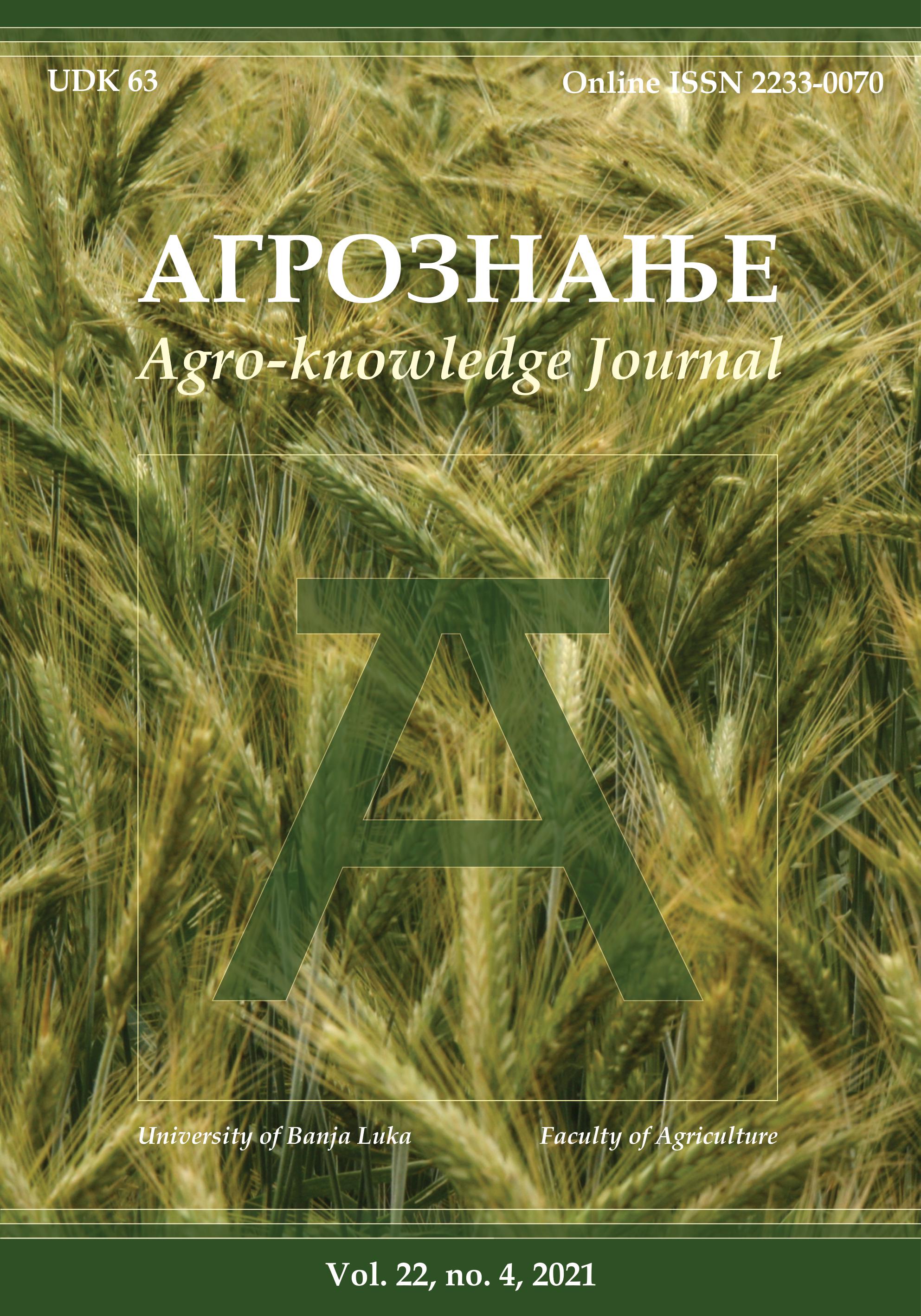Relationship between the test weight and some physical and chemical properties of the wheat kernel
Повезаност између хектолитарске масе и неких физичких и хемијских особина пшеничног зрна
DOI:
https://doi.org/10.7251/AGREN2104137KAbstract
For a long period of time, the test weight has been used as an indicator for cereal quality evaluation in a large number of countries, and it is still in use as a fast method for determination of a price range for raw material. Correlation between the test weight, flour yield, and other quality parameters varies depending on the variety and growing conditions. In order to evaluate technological quality of wheat, the aim of this study is to determine correlation between the test weight (TW) and some physical and chemical parameters of the wheat kernel [the 1000 kernel weight, vitreousness, moisture content, ash content on dry matter, fat content, protein content, starch content, protein sedimentation volume (the Zeleny test), gluten index, content of wet gluten]. Six samples of wheat were analysed in this study. Physical and chemical parameters of wheat kernels were tested, and then correlation between the mentioned parameters was analysed. Among the identified correlations, the correlations between the test weight (TW) and 1000 kernel weight (TKW) (p˂0.01), vitreousness (p˂0.01), moisture content (p˂0.01), fat content (p˂0.01), protein content (p˂0.05), protein sedimentation volume (the Zeleny test) (p˂0.01), and wet gluten content (p˂0.05) stand out as very important. It can be concluded that the test weight can be used in the evaluation of technological suitability and baking quality of wheat because it is related to most of the analysed physical and chemical properties.
Key words: wheat, test weight, physical properties, chemical properties, relationship

